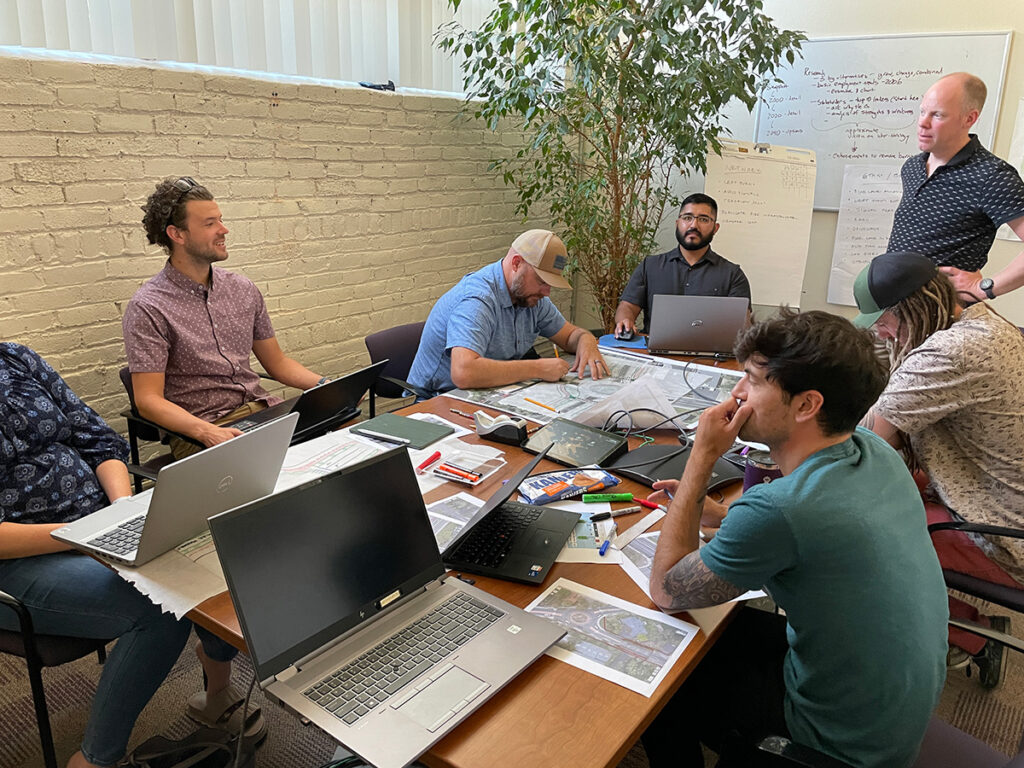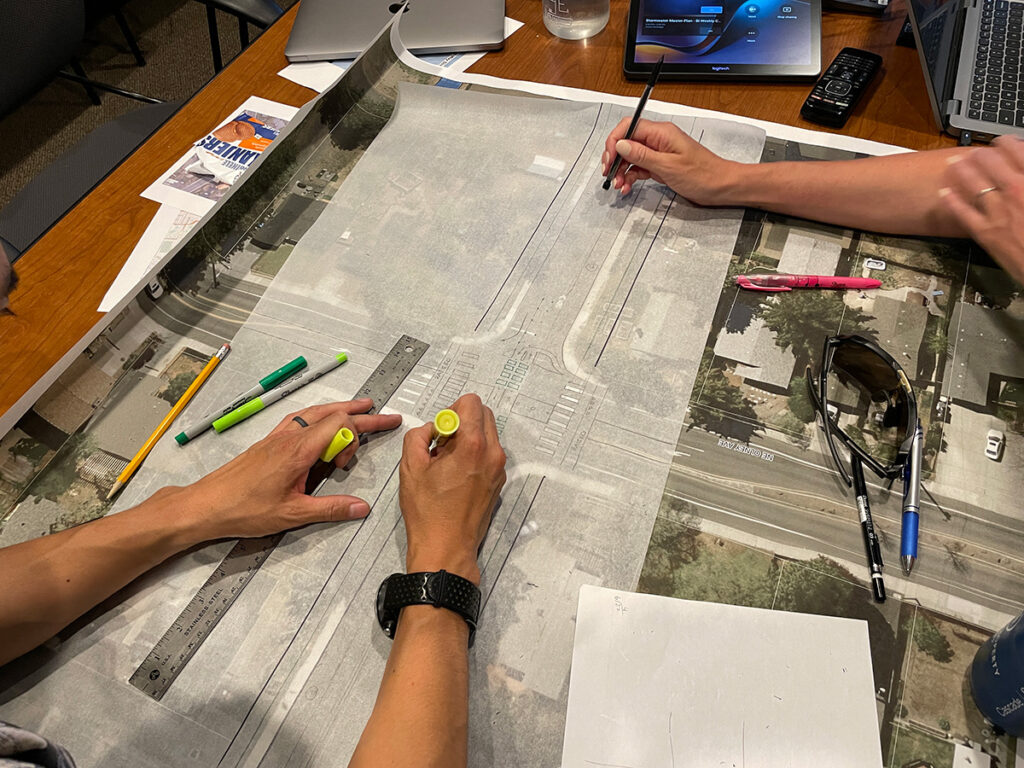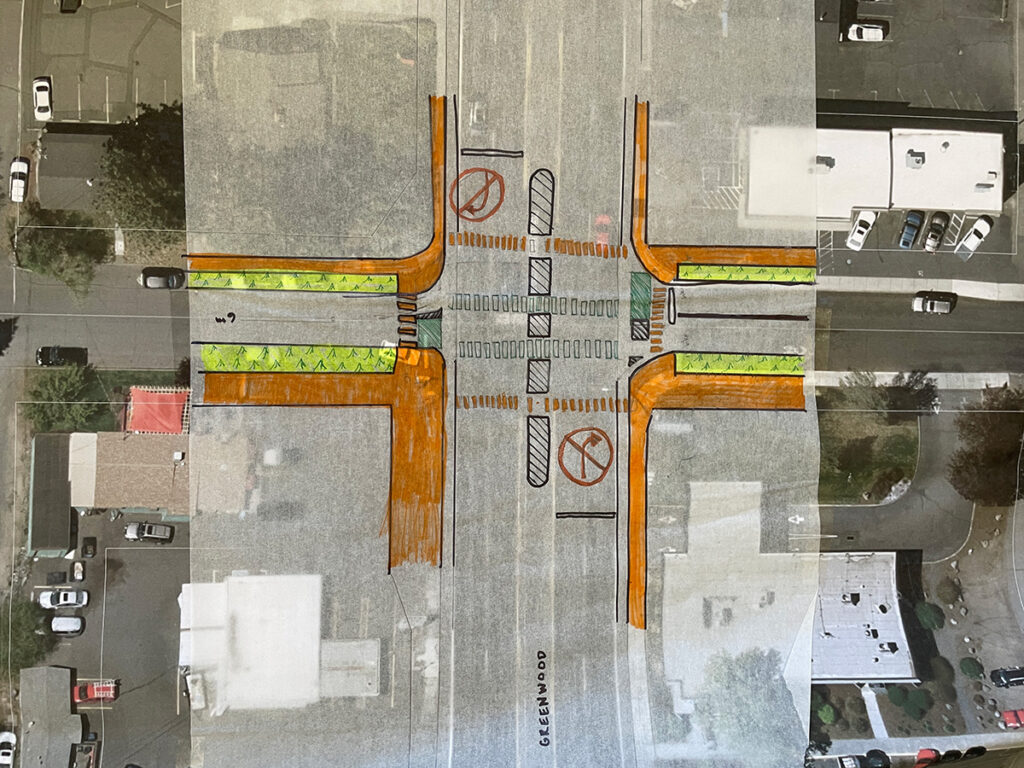What did we learn?
Last August, two Dutch transportation planners, Sjors Svender and Joost Toxopeus, came to Bend to introduce the philosophy of Dutch transportation planning to local planners, engineers, and advocates. The two days centered around two case studies: NE 2nd Street from Greenwood Ave to Franklin Ave, right in the middle of the new Bend Core Area, and Butler Market from Boyd Acres to Wells Acres, part of the soon to come North-South Cross Town Bikeway. Bike and active transportation advocates worked with transportation planners and engineers to think through ideas that seem new to most of us but which could make Bend a safer and more enjoyable place to live while still providing plenty of room for people driving cars. Around the case study workshops were small group meetings between city management and the Dutch planners, group rides during which Bend folks talked with the Dutch planners about features of Bend’s streets, and a public lecture by Sjors which showed how people walking, biking, and driving can all safely use the streets if they are designed properly.

Some of the key points people took away from the session were:
- Streets should tell a story to their users without the use of signs.
- Our street standards are a big portion of what gets in the way of creative street design.
- We need to designate which streets are designed for car traffic and which should be modified to make travel by bike safe and efficient.
- Separating traffic by weight and speed is critical to safety. In most cases this means separating people on bikes from cars. In some cases it means separating people walking from people biking and separating both from car traffic.
- Planning how streets connect to make a useful network is needed to make sure individual projects build to something great. Those networks must be continuous–bike lanes or paths can’t just end and push people on bikes into traffic.
- The best design for bike paths is a “keep-on-going” approach so people on bikes can move along safely for long distances.
- “Quick-builds” should be used to experiment cheaply and quickly–they can be adjusted until they work and then made permanent.
- We should plan entire corridors rather than just an intersection at a time.
- We need to try new techniques, like median U-turns (aka “jelly-bean”) that give us alternatives to dangerous left-turns.
- Every bike project is actually a car project–they make driving safer and less congested.


We’re excited to see how these ideas are used to make our streets safer for all people as the GO Bond projects are planned and new streets are built for new developments.
Bend Bikes wants to thank our partners in bringing this event to Bend: Bend Metropolitan Planning Organization, City of Bend, Central Oregon LandWatch, Capozzi Family Foundation, and Ashley & Vance Engineering. Special thanks to James Teeter and Robin Lewis for their vision and planning for this event.
